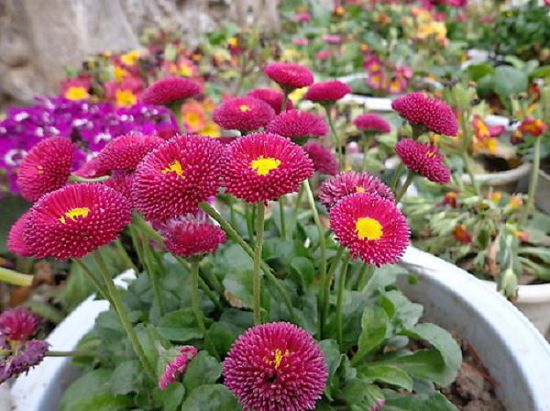Steps and methods of rejuvenation of potted flowers after turning over pots and changing soil

After the continuous development and growth of potted flowers, the plants are vigorous and tall, and the roots also continue to grow towards the basin wall, making the original basin seem smaller and smaller. Every one to two years, the nutrients in the basin are almost exhausted, and the roots of the plants show signs of aging. The leaves are also gradually yellowing and thinning due to lack of nutrient supply, so it is necessary to consider turning the pot and changing soil.
Turning the basin and changing the soil can generally be carried out (in the south) from February to March or (in the north) from March to April. It is generally not watered a few days before turning the basin and changing the soil, and wait for the basin soil to be semi-dry. If the basin soil is too wet, the excessive viscosity between the basin wall and the soil is not conducive to the soil ball protruding, and the lack of water affects the growth of the plant.
Turning the basin and changing the soil is generally chosen in the cloudy day or in the evening (the best continuous cloudy day after turning the basin), you can first draw a circle with an iron nail next to the soil of the basin wall to facilitate the soil ball to come out.
The detached soil ball showed that the root system had spread all around the basin wall, and the nutrients previously stored in the basin soil were almost exhausted by the continuous growth of the plant.
After the soil ball comes off, the soil ball can be scattered gently and the old soil ball will be peeled off slowly and thoroughly; or it can be fully washed with water so that the roots are all exposed; then carefully examine the state of the roots and cut off the old and bad roots.
While cutting off the old and bad roots, the inner horizontal branches, weak branches and overlapping branches of the plant can be cut off. the function of pruning is to reduce leaf transpiration to facilitate the restoration of the plant root system, and to trim the crown of the plant for many years.
If the plant is put on the pot directly without pruning, the plant may have the phenomenon of naturally falling leaves to adapt to the damaged roots (or no new branches have been germinated for a long time). This is called the latent pot period.
Before putting on the basin, the water outlet of the basin bottom can be stacked with two tiles in a zigzag shape, which has the advantages of: first, keeping the water outlet smooth, which can maximize the prevention of stagnant water and rotting roots; second, the water outlet is also the inlet of the basin bottom air, which can increase the air exchange in the basin soil, facilitate root breathing, and keep the plant in the best growth state.
After the outlet folds the zigzag tile, the basin bottom can be covered with a layer of about 2-3 cm (depending on the size of the basin to flexibly control the thickness of the soil) pre-retted organic fertilizer soil (or nutrient soil). The plants treated by root and leaf pruning are placed in the center of the basin, and a 2-3 cm gap can be left around the edge of the basin.
Fill the 2-3 cm space with pre-retted organic manure soil (or nutrient soil) and remove the moss and weeds from the basin before filling. The fill should not be filled to the top, and at least 2-3 cm should be reserved for watering and water storage.
Fat mud filled with organic matter after turning the basin and changing the soil.
After completing the above procedures, the work of turning over the basin and changing the soil will be completed by pouring enough root water at one time.
Related
- What if the leaves of potted flowers turn yellow?
- Florescence Control of several Flowers
- Anti-freezing technology and post-freezing nursing technology of flowers
- What is the classification of flowers? What are the common methods of flower classification?
- Prevention and control of alkali and acid damage of flowers in courtyard
- Technology of Anti-freezing and restoring growth of Flower seedlings in greenhouse and greenhouse
- How does flower fertilization not hurt the root? Fertilization technology of flowers
- Key points of disinfection in flower greenhouse
- Several pesticides that are banned or used cautiously in flowers
- How to fertilize the flowers that watch the leaves?



